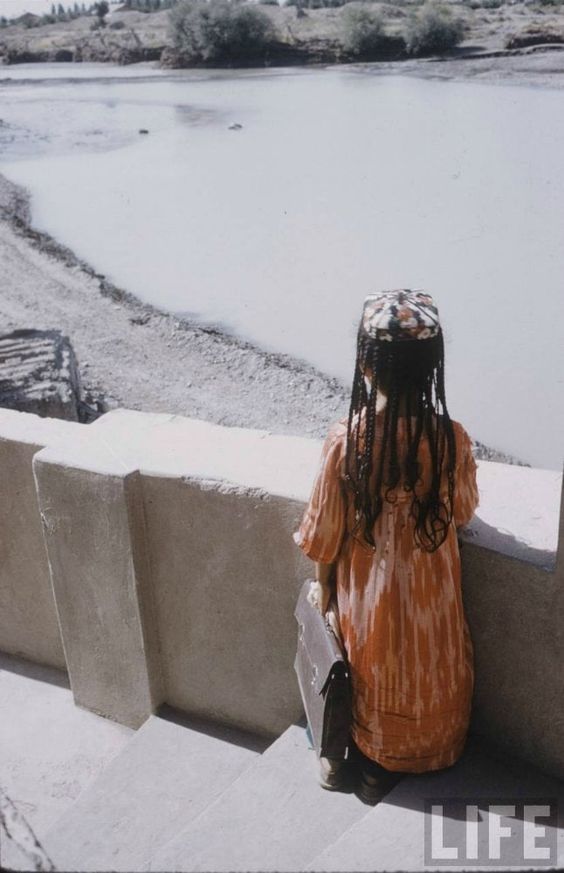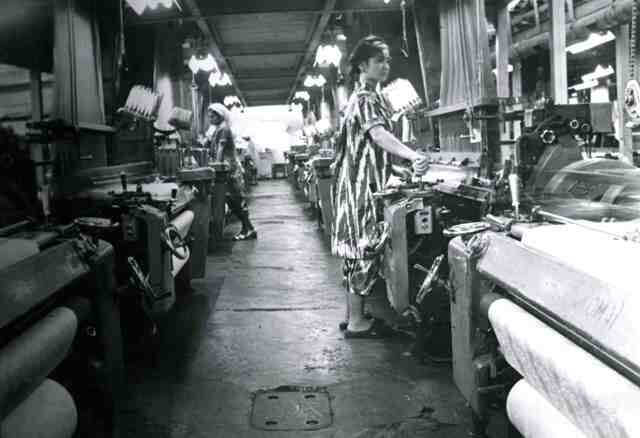1958 school girl | ikat dress and memories
We love this photo! It is from “Life” magazine archives and was taken in Tadjikistan in 1958 by an American photographer Howard Sochurek during his travels in the former USSR.
As a woman born and raised in Soviet Central Asia, this photo resonates deeply with me. It evokes a rush of nostalgia and fills my heart with warmth. It beautifully captures the essence of that era, speaking volumes about a social landscape of those times.
In 1958, the girl in this photo resembles how our mothers appeared when they attended Soviet schools: dressed in ikat dresses, hair traditionally braided in many braids, and carrying school bags far too large for their height and age. There was a clear determination to study!
Why are modern day Uzbek ikat fabrics narrow?
Today's topic is the narrow width of Uzbek ikats fabrics. Many of you ask us why Uzbek ikat fabrics are so narrow. With this post I will try to explain why.
Ikat fabrics and arrival of communism
Ikat weaving has been practiced in Central Asia for centuries by artisans. The arrival of bolsheviks with an idea of communism about 100 years ago put an end to individual craftsmanship and made all manufacturing, including ikat making a government domain. Only state owned textile companies made ikats. Attempts to make ikats at home as a side business was a crime for which artisans could go to a jail. This sounds wild but the Soviet idea was to have everyone economically equal. When someone works secretly at home, in addition to working for a state textile factory, he/she gets richer than others. That was unacceptable to the Soviet regime. The fact that ikat weaving has survived is partly due to these "crimes" committed by artisans by working in secret.


